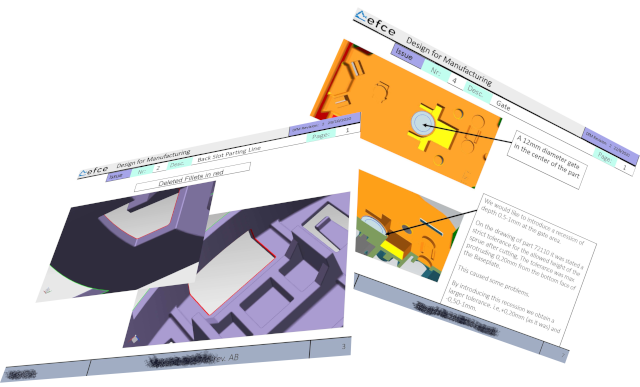
Τι είναι ο 'Σχεδιασμός για Δυνατότητα Κατασκευής'
Ο Σχεδιασμός για Δυνατότητα Κατασκευής ή/και Συναρμολόγησης (DfM ή DfMA) είναι η διαδικασία, μέθοδος και τέχνη, της δημιουργίας οικονομικά αποδοτικών προϊόντων, που είναι εύκολο να κατασκευαστούν με αξιόπιστο τρόπο.
Η έννοια υπάρχει σχεδόν σε όλους τους κλάδους της μεταποίησης, αλλά η εφαρμογή διαφέρει σε μεγάλο βαθμό ανάλογα με την τεχνολογία κατασκευής. Ο Σχεδιασμός για Δυνατότητα Κατασκευής θα επιτρέψει την επιδιόρθωση πιθανών προβλημάτων στη φάση του σχεδιασμού που είναι το λιγότερο δαπανηρό μέρος για την αντιμετώπισή τους.
Ανάλογα με τους διάφορους τύπους διαδικασιών παραγωγής, υπάρχουν καθορισμένες οδηγίες για τις πρακτικές DFM. Αυτές οι οδηγίες DfM βοηθούν στην αντιμετώπιση όλων των απαραίτητων πτυχών κατά τη διάρκεια της διαδικασίας DfM.
Οι αλλαγές που εντοπίζονται νωρίς στην ανάπτυξη του προϊόντος, ενδέχεται να έχουν σημαντικό αντίκτυπο και κοστίζουν λιγότερο.
Σχεδιαστικά ελαττώματα που εντοπίζονται σε μεταγενέστερα στάδια, είναι πολύ δύσκολο να εφαρμοστούν και κοστίζουν πάρα πολύ.
Στη χύτευση με έγχυση, καθώς τα καλούπια είναι σημαντικές επενδύσεις, οι αλλαγές πρέπει να εντοπίζονται πριν από την έναρξη του σχεδιασμού και της κατασκευής τους. Κατά τη διάρκεια του DfM θα μελετηθεί διεξοδικά:
- Ποιότητες Ατσαλιών Κατασκευής του Καλουπιού
- Κατεύθυνση Ανοίγματος του Καλουπιού και των λοιπών κινητών μερών.
- Επιφάνειες Επαφής των κινητών μερών του καλουπιού
- Θέση και γεωμετρία των ενθέτων κι υποενθέτων του καλουπιού
- Εξωλκείς. Τύπος και θέσεις.
- Mold Weak Spots
- Ανάλυση Ροής
- Μελέτη των κυκλωμάτων ψύξης
- Γεωμετρία του σημείου της έγχυσης και σύστημα οδήγησης του τήγματος
- Αριθμός Κοιλοτήτων
- Ποιότητα των Επιφανειών
- Ανοχές Γραμμικών και Γεωμετρικών Διαστάσεων
- Μελέτη για την αποφυγή λαθών χύτευσης, όπως ενώσεις υλικού, στρεβλώσεις, ρουφήγματα/κενά κοκ
Οι αλλαγές πρέπει να εντοπίζονται στην αρχή του κύκλου ανάπτυξης των προϊόντων.
: Επιπτώσεις της Αλλαγής
: Κόστος της Αλλαγής

| Σχεδιασμός | Σχεδιασμός | Κατασκευή | Παραγωγή | Έναρξη |
| Εξαρτήματος | Καλουπιού | Καλουπιού | Δειγμάτων | Παραγωγής |